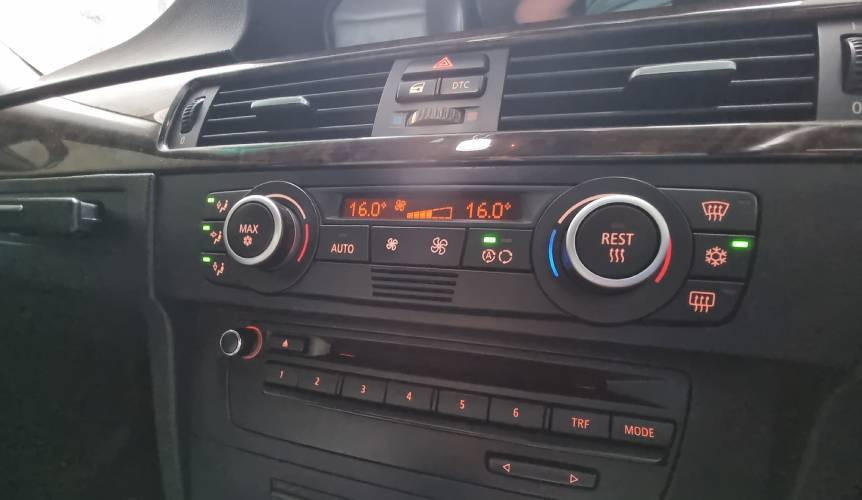
Toyota ceased production of the Mark X in end of 2019 after 15 years. [File, Standard]
Strong, powerful, fuel-guzzler, reliable… all these adjectives describe the tested and proven Toyota Mark X.
Some say it’s expensive to maintain, while others say: “it’s not for those buying their first car”.
Since hitting the market in 2004, the Toyota Mark X has been a success in several markets. In 2019, the curtain fell on the V6 petrol engine vehicle that terrorised other motorists on the highways.
In Kenya, the vehicle can still be imported, as the country allows importers to ship in vehicles as old as seven years. That means, the Mark X would still be imported in Kenya until 2026.
The Mark X, which is manufactured by Japanese automaker Toyota Motor Corporation, serves motorists seeking luxury, elegance and power.
The 2015 Mark X, which is currently the most-imported edition of the model in Kenya, comes with a 2,500cc six-cylinder petrol engine, generating 212 horsepower, and doing a 0 to 100 kilometres per hour acceleration in 7.9 seconds.
However, there is a version of the Mark X that comes with a 3,500cc six-cylinder petrol engine, that is more powerful, producing 314 horsepower. The 3.5 litre Mark X accelerates from 0 to 100 kilometres per hour in 5.9 seconds.
The powerful engine is paired to 6-speed automatic transmission.
Toyota said the Mark X was inspired by the appealing looks and comfort of Toyota Crown, the reliability of Toyota Camry and the luxury of the Toyota Lexus GS. Some of the Toyota Mark II features were also installed on the Mark X.
The Mark X exists in two generations, the X120 produced between 2004 and end of 2008, and the X130, which was produced between 2009 and 2019.
In Kenya, a 2015 model of the car could set you back between Sh1.8 million and Sh2.5 million. The 2019 model could cost up to Sh3.6 million.
The car comes with a 1,570-kilogramme kerb weight (weight while empty), making it stable at high speeds.
The Mark X’s full tank is 71 litres. That means at the current retail price of petrol in Nairobi, Sh129.72 per litre, you’d require Sh9,210 to fill the tank.
On good driving habits, and a free-flowing traffic, the 2.5 litre Mark X could give you up to 11 .5 kilometres per litre. That means, on full tank, the car could take you up to 750kms to 800kms, depending on your driving habits and the amount of traffic on the highway.
Dickson Musungu, a Nairobi-based banker, owns a Toyota Mark X, and says the car’s streamlined look attracted him to it.
“Instead of the too-common Toyota logo, the Mark X’s bumper grill has the modified X badge, making it stand out from other vehicles under the Toyota emblem,” he said.
The Mark X has a fairly good ground clearance – 6.1 inches, making it a good car for rural drives, once in a while. Some reviewers, however, question the credibility of the vehicle’s ground clearance.
Charles Odhiambo, a mechanic at Industrial Area in Nairobi, has good reviews of the car, saying the 2010 Mark X was “the best edition of the vehicle”.
Odhiambo says the vehicle’s most common problem is regular failure of the oxygen sensor.
Cars Directory website reports that “a lot of Mark X owners” sign up for repairs of the oxygen sensor.
The oxygen sensor of your car measures the amount of oxygen in the exhaust gases that exit the engine. It sends real-time data about the amount of unburnt oxygen in the exhaust system to the engine's computer to determine the correct air-to-fuel ratio for the car’s engine.
A bad or failing oxygen sensor presents a negative impact on engine performance and environmental emission.
The main signs of a failing oxygen sensor include the engine misfiring or your vehicle running roughly or irregularly during idle.
The other engine performance issues associated with a failing oxygen sensor include stalling, hesitation, and loss of power.
If the mechanic determines that the Check Engine light illuminates because of a problem with your oxygen sensor, the sensor should be promptly replaced.
A failing oxygen sensor negatively affects the fuel combustion and delivery systems. If it’s not working properly, the oxygen sensor will allow too much fuel to be injected into the engine, which will manifest in significantly lower kilometres per litre figures, compared to the usual petrol consumption of your car.
When there is excess fuel in the engine due to a bad or failing oxygen sensor, the engine will produce a smell similar to that of rotten eggs. You may also notice black smoke emanating from the car’s exhaust.
“The other problem that is common with the Mark X is faulty electric power system,” said Odhiambo, warning that it costs a lot of money to repair the system.
Ashraf Bayusuf, another owner of the Mark X in Nairobi, said the vehicle serves him well during long distance travels.
“I move a lot between Nairobi and Mombasa. The vehicle drives well, and its headlamps are generally good for night travel,” he said.
Despite Toyota saying the vehicle has a ground clearance of 6.1 inches on kerb weight, Susan Agutu, 39, told The Standard that “low” ground clearance is one of the major downsides of the vehicle.
“If the ground clearance is altered, it negatively affects the vehicle’s stability. It could also land you in trouble with your insurer,” said the Kisumu-based lawyer, who owns a Toyota Mark X.
“I previously owned a Mark II Grande, and when I upgraded to Toyota Mark X, I felt that was one of the best decisions I have ever made. Some people would complain about its fuel consumption, but for me I’d say it serves me well, and I don’t feel that it’s hurting my pocket,” she said.
Other owners of Mark X said its dashboard is prone to cracking, and therefore subjecting owners to extra expenses, especially when the vehicle gets old.
Mechanics say that due to the weight of the car, aggressive motorists who accelerate and brake quickly, tend to replace its brake pads often.
“The car feels strained under sharp braking,” said Susan Agutu.
Other documented problems that are common with the Mark X include rigid suspension, sufficiently high fuel consumption, poor soundproofing wheel arches that make rumbles of the wheels be heard in the cabin, engine starter issues, high tax rate due to the powerful engine, risk of loss of compression in the 5th cylinder due to factory miscalculations by Toyota engineers, constant oil leaks from under the oil seals of the shock absorber struts, steering wheel challenges, among others.
 The Standard Group Plc is a multi-media organization with investments in media platforms spanning newspaper print
operations, television, radio broadcasting, digital and online services. The Standard Group is recognized as a
leading multi-media house in Kenya with a key influence in matters of national and international interest.
The Standard Group Plc is a multi-media organization with investments in media platforms spanning newspaper print
operations, television, radio broadcasting, digital and online services. The Standard Group is recognized as a
leading multi-media house in Kenya with a key influence in matters of national and international interest.











